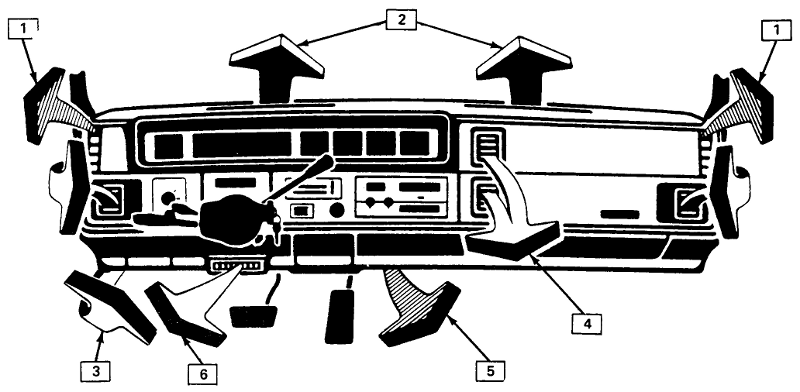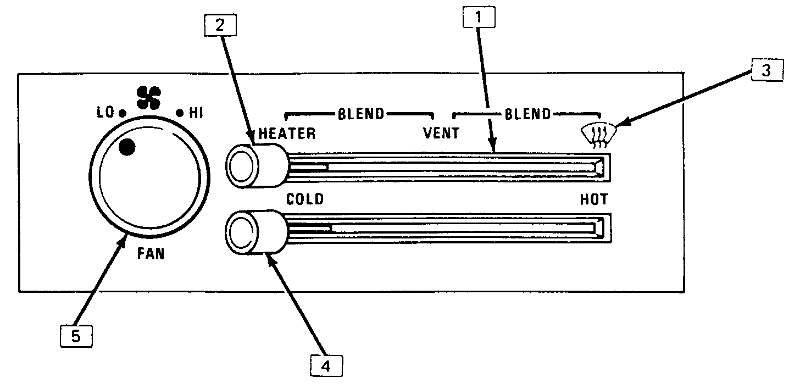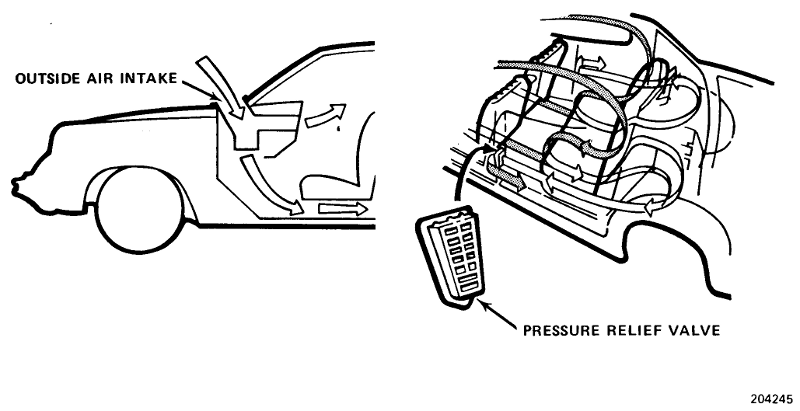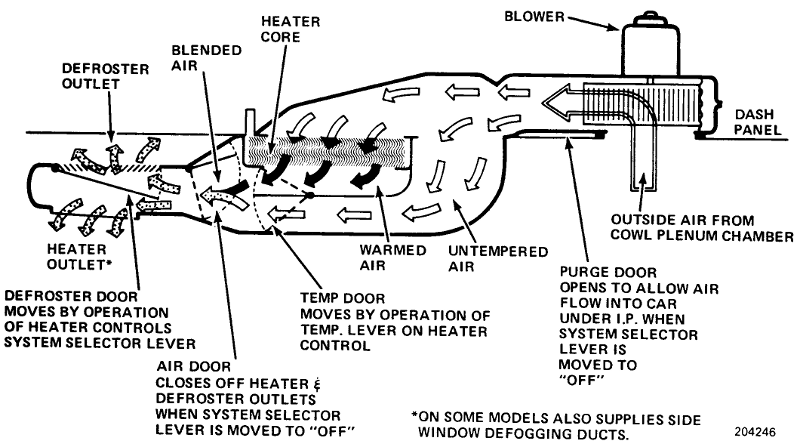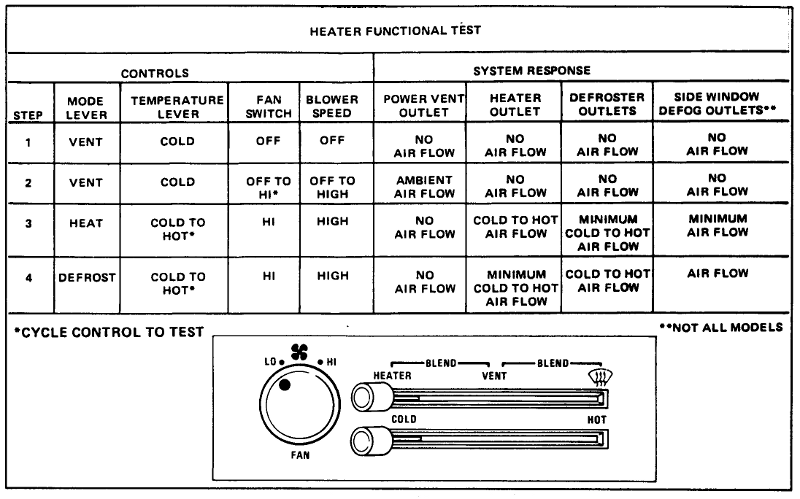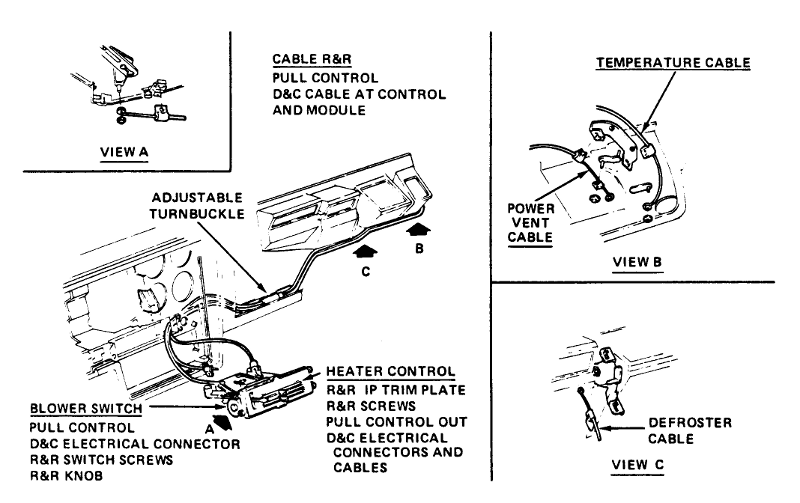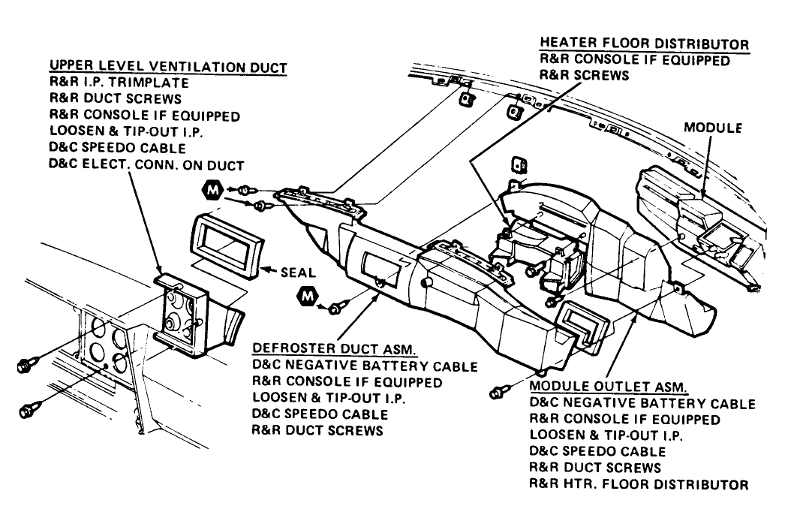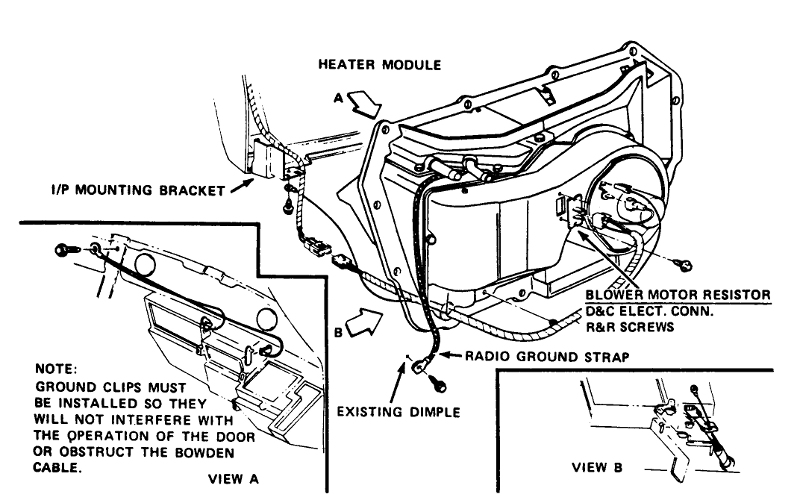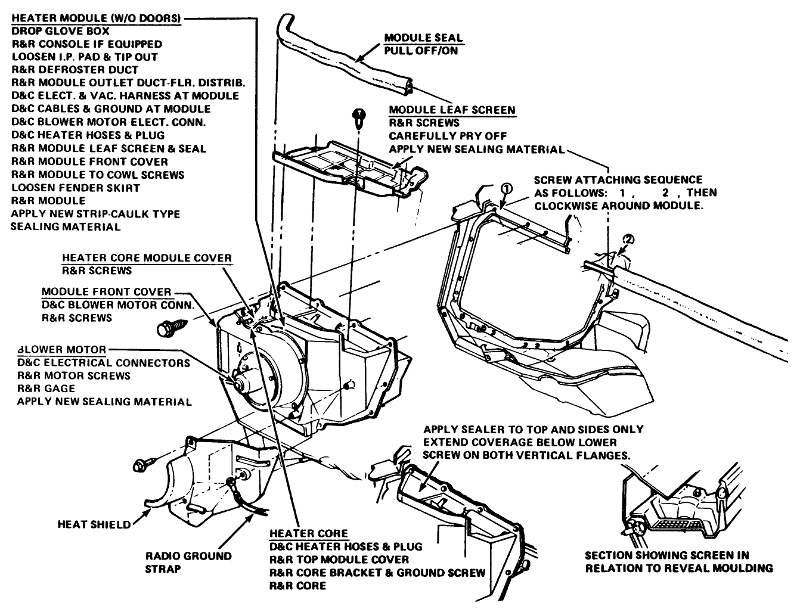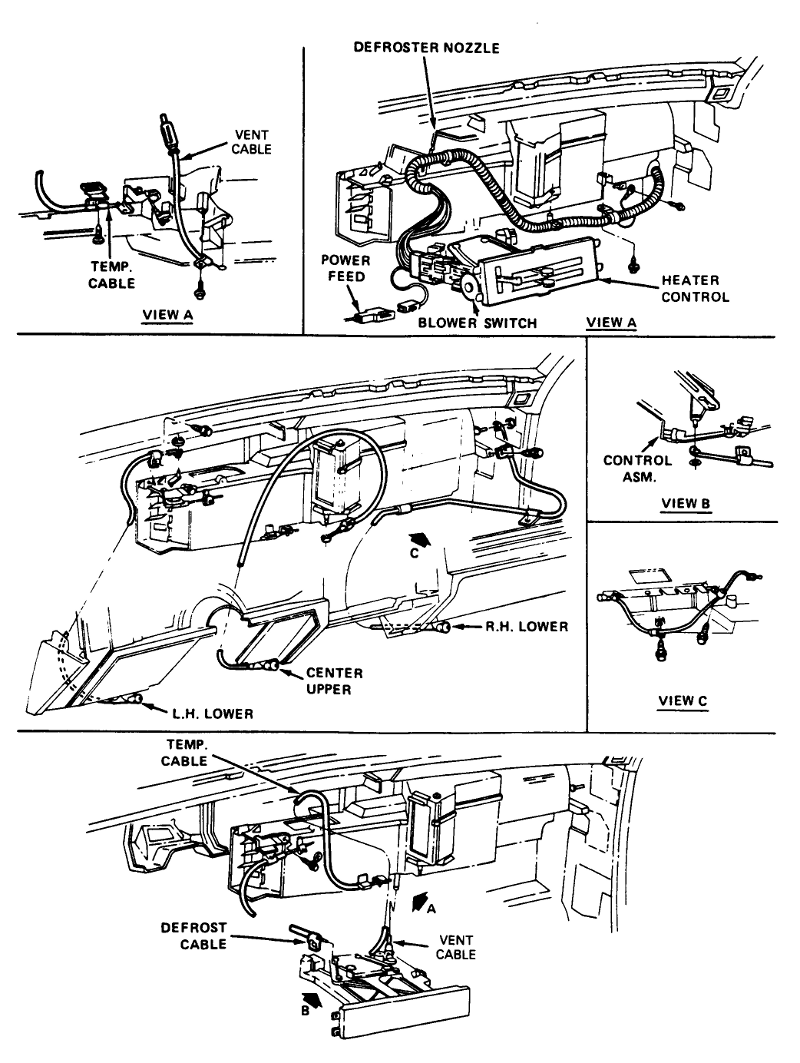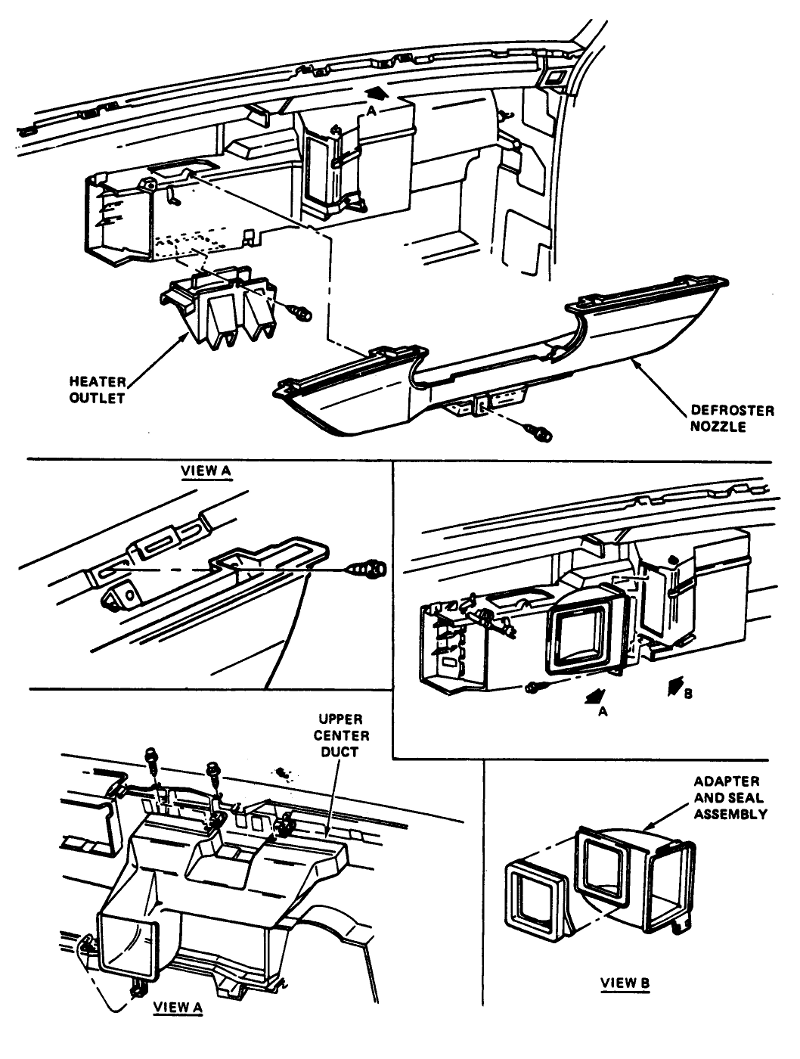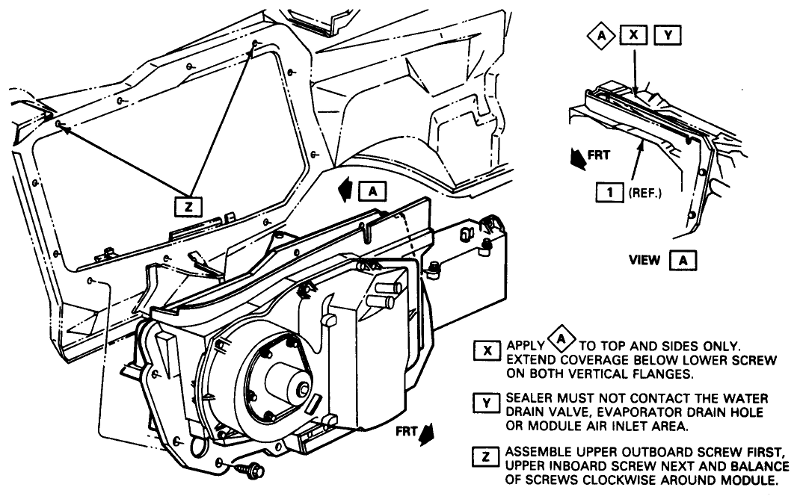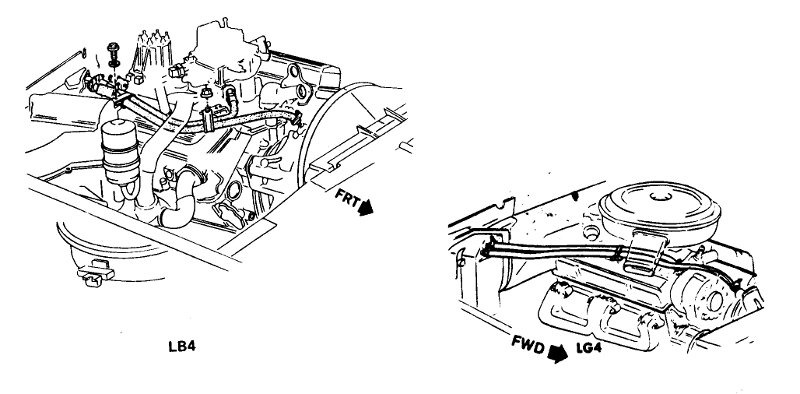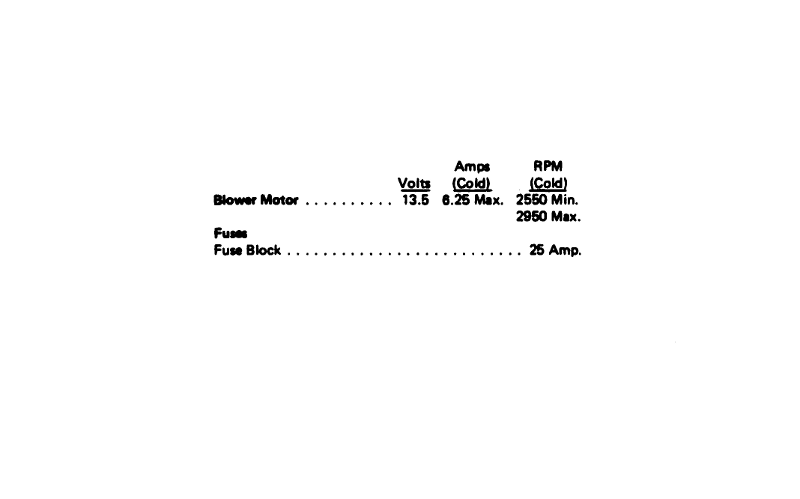| Cause |
Correction |
| Slow warming in car. |
- Incorrect operation of controls. Advise operator of proper operation of heater controls. Explain operation of vents and controls.
- Low coolant level.
- Check control cable and blower operation. |
| Objectionable engine or exhaust fumes in car. |
- Check for seal between engine compartment and plenum.
- Check for proper sealing between air inlet duct assembly and cowl.
- Locate and seal any other air leaks. |
| Cold drafts on floor. |
- Check operation and adjustment of vent cables.
- Advise operator of proper operation of heater system.
- Advise operator to use blower to force air to rear seat area.
- Check to be sure front floor mat is under floor mat retainer at cowl |
| Insufficient heat to rear seat. |
- Obstruction on floor, possibly wrinkled or torn insulator material between front seat and floor.
- Advise operator to use HI blower speed. |
| Low engine coolant level - drop in heater air temperature at all blower speeds. |
- Check radiator and cooling system for leaks, correct and fl11 to proper level. Run engine to dear any air lock. |
| Failure of engine cooling system to warm up. |
- Check engine thermostat; replace if required.
- Check coolant level. |
| Kinked heater hoses. |
- Remove kink or replace hose. |
| Foreign material obstructing water flow through heater core. |
- Remove foreign material if possible, otherwise, replace core - can usually be heard as squishing noise in core. |
Temperature door valve) may be improperly adjusted.
Air doors do not operate. |
- Check installation and/or adjustment of air control or air-defrost cable. |
| Cause |
Correction |
Air door does not open.
Defroster door does not open fully. |
- Check cable operation. |
| Air door does not open. |
- Check installation and/or adjustment of air control or air-defrost cable. |
| Temperature door does not open. |
- Check and adjust temperature control cable if necessary. |
| Obstructions in defroster outlets at windshield. |
- Remove obstruction.
- Look for and fix loose instrument panel pad cover at defroster outlet. |
| Damaged defroster outlets. |
- Reshape outlet flange with pliers.
- The outlet should have a uniform opening. |
| Blower motor not connected. |
- Connect wire. Check ground. |
| Inoperative blower motor. |
- Check heater fuse and wiring. Replace motor if necessary. |
| Inoperative blower motor switch. |
- Replace switch if necessary. |
| Cause |
Correction |
| Blown fuses caused by short in electrical system. |
- Locate and correct short. |
| Open circuit. |
- Repair circuit between ignition switch, blower switch and blower motor. |
| Front floor mat wet under heater caused by improperly sealed windshield or leaking heater core. |
- Reseal windshield, or lead-in from radio antenna.
- Repair (if possible) or replace heater core.
- Check for proper seal to cowl and for leak at hose connection on heater core. Hose leaking into the heater case is often misdiagnosed as leaking core. |
| Heater "gurgle," whine or "swish." |
- Check engine coolant level in radiator.
- Check for obstruction in core and/or hoses. |
